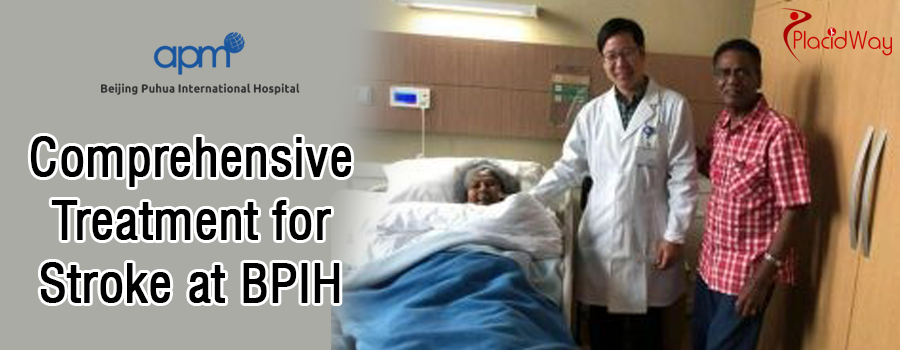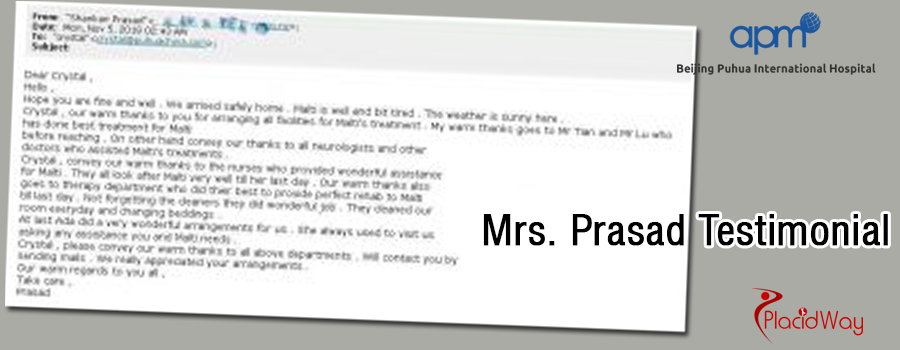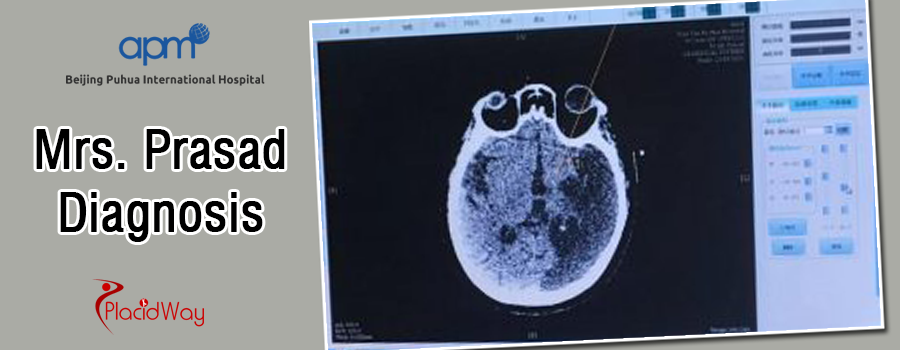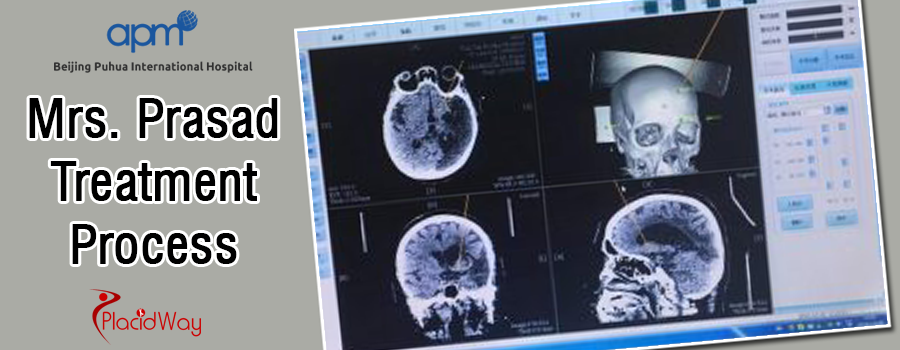Comprehensive Treatment for Stroke at BPIH
Patient Case Study, Cerebral Hemorrhage, Stroke Treatment, Minimally Invasive Brain Repair, Stem Cell Transplantation, Physical therapy, Traditional Chinese Medicine, Beijing Puhua International Hospital

Comprehensive Treatment for Stroke at BPIH
Here we present you another testimonial for Minimally Invasive Brain Repair, Stem Cell Transplantation, Physical therapy, TCM.
Mrs. Prasad’s family was thanking us as Mrs. Prasad, who was suffering for more than 10 years from the after-effects of a cerebral stroke, once again had a beautiful smile on her face and this created a joyful atmosphere in their home.

Medical History
Ms. Malti Prasad is a 60-year-old, female patient from New Zealand.
In 2008, Mrs. Prasad suffered from a stroke, which left her with difficulty in walking and problems with her speech. Her muscle strength of the right upper limb was 0-3 /5(near end 3, the distal end 0), and the right lower limb was 4/5. Due to her disabilities, Mrs. Prasad became depressed.
Diagnosis
The stroke was caused by atherosclerosis of the carotid artery, which left her with dystonia, a neurological movement disorder syndrome in which sustained or repetitive muscle contractions result in twisting and repetitive movements which may resemble a tremor.
BPIH’s medical team evaluated her medical data and physical symptom thoroughly and decided on the following treatment protocol for Mrs. Prasad: Minimally Invasive Brain Repair, targeting the left basal ganglia region for stem cell injection, which is the area associated with a variety of functions, including control of voluntary motor movements, procedural learning, habit learning, eye movements, cognition and emotions.

BPIH utilized the Remebot, which performed a robotic stereotactic minimally invasive surgical procedure on this patient. It was developed by Dr. Zengmin Tian, who with has more than 20 years of clinical experiences in this field of brain surgery developed this very advanced type of medical machinery.
The Remebot identifies the brain areas it needs to repair using 3D imaging and positioning. The procedure is so minimally invasive that only local anesthesia is required as a 3-millimeter opening is made on the skull for a needle to follow the computer’s pre-designed route to inject stem cells in the designated spots. The surgery produces no bleeding under the meninges and only one or no stitches are required when the procedure is finished.
Our medical team used the Remebot’s advanced algorithms to study the course of the patient’s disease, precisely identify the injured areas and determine the specific position in which stem cells are to be implanted. Placing stem cells exactly where they can be more useful is what makes our treatment so unique and increases our patients’ recovery chances considerably.
The Remebot has already successfully been utilized for cerebral infarction, biopsies of the brain, cerebral hemorrhage, cerebral cysts, and epilepsy and for Parkinson disease, etc.
Treatment Process
The operation went smoothly, and the patient recovered well. The postoperative CT scan revealed no excessive bleeding and that target area was accurately treated.
Immediately following the procedure, the patient received a specialized IV treatment protocol with utilizes nutrients to speed up and enhance the effect the stem cell therapy provides and already within 1 week, noticeable changes were observed.

Pre-operation: Muscle tone was increased in the right limb (3/5), walking difficulty with weak muscle strength. Muscle strength was 0-3/5 in the right upper limb (near-end 3/5, distal end 0/5); right lower limb was 4/5.
Post-operation: Muscle tone was improved in the right limb (1-2/5), walking ability was improved. Muscle strength was 1-4/5 in the right upper limb (near-end 4/5, distal end 1/5).
Mrs. Malti can now walk, although slowly, but she is continually making progress. Her facial expression is greatly improved and we have seen her smile for the first time since she was admitted to our hospital. Now she cannot stop smiling and even her speech has improved. She even expressed her gratitude to our medical team in Chinese.
Mrs. Malti has returned to New Zealand and we are looking forward to hearing more about her improvements soon!
Click the button below to learn more about Minimally Invasive Brain Repair at BPIH and its other options:





.png)



.png)
